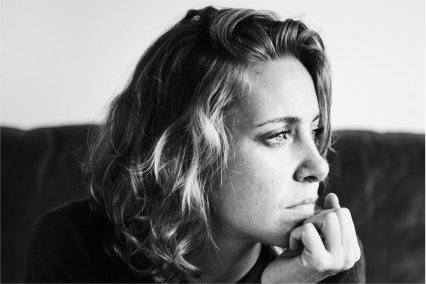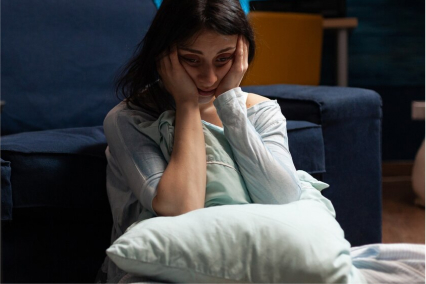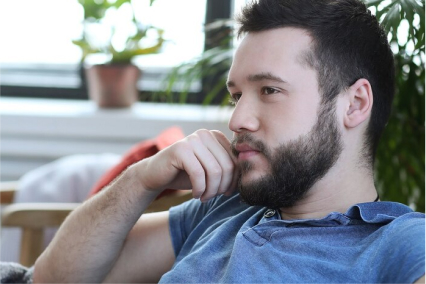According to Medlineplus.gov, psychiatric disorders (or mental disorders) are conditions that affect your thinking, feeling, mood, and behavior. They may be occasional or long-lasting (chronic). They can affect your ability to relate to others and function each day. Psychiatric disorders treatment (PDT) plans vary depending on the exact diagnosis and the specific needs of the individual patient. [1]
Symptoms of psychiatric disorders tend to be more severe than expected in response to an upsetting event, such as normal grief after the loss of a loved one. This is a rather broad definition, essentially boiling psychiatric disorders down to problems that people experience with their minds and their moods. However, there are a number of specific diagnoses categorized under the larger umbrella of mental illness, the PDT would help with any diagnoses.

Different Types of PD
A large number of psychiatric disorders have been identified. There are over 200 classified types of psychiatric disorders, but some of the most frequently diagnosed ones are:
- Depression
- Personality disorders
- Anxiety disorders
- Schizophrenia
- Borderline personality disorder
- Generalized anxiety disorder
- Addictive disorders, including drug abuse, alcohol abuse, and behavioral addictions
- ADHD
- Obsessive-Compulsive Disorders
- Trauma
- Posttraumatic stress disorder (PTSD)
- Paraphilic Disorders: Many sexual-interest disorders are included in this group. Examples include sexual sadism disorder, voyeuristic disorder, and pedophilic disorder.
- Other Mental Disorders: This group includes psychiatric disorders that are due to other medical conditions or that don’t meet all the requirements for any of the other psychiatric disorder groups.
It is possible to be diagnosed with one or more at the same time. For example, addictive disorders often co-occur with other mental health disorders, such as depression or bipolar disorder.
Common Symptoms of PD
Identifying mental illness can be challenging since it usually presents itself differently in different individuals. as is each PDT. However, there are a few common warning signs to look out for.
- Confused thinking
- Difficulty concentrating
- Extreme sadness
- Excessive worry
- Severe changes in mood
- Difficulty discerning reality from delusion
- Isolation and avoidance of friends or social activities
- Sudden changes in sleeping habits, eating habits, or sex drive
- Alcohol or drug abuse
- Suicidal thoughts
A psychiatric disorder may also cause physical symptoms, such as a headache, back pain, or stomach pain. If you’re being evaluated for a psychiatric disorder you must tell your doctor about any physical symptoms that you are experiencing including unexplained aches and pains.
PDT for Depression
According to the National Institute of Mental Health, Depression (Major Depressive Disorder or Clinical Depression) is a common but serious mood disorder. It causes severe symptoms that affect how you feel, think, and handle daily activities, such as sleeping, eating, or working. To be diagnosed with depression, the symptoms must be present for at least two weeks. [2]
Some forms of depression are slightly different, or they may develop under unique circumstances, such as: [2]
- Persistent depressive disorder (also called dysthymia): is a depressed mood that lasts for at least two years. A person diagnosed with persistent depressive disorder may have episodes of major depression along with periods of less severe symptoms, but symptoms must last for two years to be considered persistent depressive disorder.
- Postpartum depression: is much more serious than the “baby blues” (relatively mild depressive and anxiety symptoms that typically clear within two weeks after delivery) that many women experience after giving birth. Women with postpartum depression experience full-blown major depression during pregnancy or after delivery (postpartum depression). The feelings of extreme sadness, anxiety, and exhaustion that accompany postpartum depression may make it difficult for these new mothers to complete daily care activities for themselves and/or for their babies.

- Psychotic depression: occurs when a person has severe depression plus some form of psychosis, such as having disturbing false fixed beliefs (delusions) or hearing or seeing upsetting things that others cannot hear or see (hallucinations). The psychotic symptoms typically have a depressive “theme,” such as delusions of guilt, poverty, or illness.
- Seasonal affective disorder: is characterized by the onset of depression during the winter months, when there is less natural sunlight. This depression generally lifts during spring and summer. Winter depression, typically accompanied by social withdrawal, increased sleep, and weight gain, predictably returns every year in seasonal affective disorder.
- Bipolar disorder: is different from depression, but it is included in this list because someone with bipolar disorder experiences episodes of extremely low moods that meet the criteria for major depression (called “bipolar depression”). But a person with bipolar disorder also experiences extreme high – euphoric or irritable – moods called “mania” or a less severe form called “hypomania.”
Examples of other types of depressive disorders newly added to the diagnostic classification of DSM-5 include disruptive mood dysregulation disorder (diagnosed in children and adolescents) and premenstrual dysphoric disorder (PMDD).
PDT for Anxiety Disorders
According to The National Institute on Mental Health, occasional anxiety is an expected part of life. You might feel anxious when faced with a problem at work, before taking a test, or before making an important decision. But anxiety disorders involve more than temporary worry or fear. For a person with an anxiety disorder, the anxiety does not go away and can get worse over time, even when you’re in PDT already. The symptoms can interfere with daily activities such as job performance, school work, and relationships. There are several types of anxiety disorders, including generalized anxiety disorder, panic disorder, and various phobia-related disorders. [3]
Generalized Anxiety Disorder
People with a generalized anxiety disorder (GAD) display excessive anxiety or worry, most days for at least 6 months, about a number of things such as personal health, work, social interactions, and everyday routine life circumstances. Fear and anxiety can cause significant problems in areas of their life, such as social interactions, school, and work. [3]
Generalized anxiety disorder symptoms include:
- Feeling restless, wound-up, or on-edge
- Being easily fatigued
- Having difficulty concentrating; mind going blank
- Being irritable
- Having muscle tension
- Difficulty controlling feelings of worry
- Having sleep problems, such as difficulty falling or staying asleep, restlessness, or unsatisfying sleep
PDT for ADHD
ADHD or Attention Deficit Hyperactivity Disorder is a highly genetic, brain-based syndrome that has to do with the regulation of a particular set of brain functions and related behaviors. In addition, ADHD is a combination of persistent problems, such as difficulty sustaining attention, hyperactivity, and impulsive behavior. The symptoms differ from person to person and may require PDT treatment for intense cases.
According to the Centers for Disease and Control Prevention (CDC), ADHD is one of the most common neurodevelopmental disorders of childhood. It is usually first diagnosed in childhood and often lasts into adulthood. Children with ADHD may have trouble paying attention, controlling impulsive behaviors (may act without thinking about what the result will be), or be overly active. [4]

Attention deficit hyperactivity disorder (ADHD) is a condition that affects people’s behavior. People with ADHD can seem restless, may have trouble concentrating, and may act on impulse. Symptoms of ADHD tend to be noticed at an early age and may become more noticeable when a child’s circumstances change, such as when they start school.
Most cases are diagnosed when children are 6 to 12 years old and, is needed start with some PDT. The symptoms of ADHD usually improve with age, but many adults who were diagnosed with the condition at a young age continue to experience problems. People with ADHD may also have additional problems, such as sleep and anxiety disorders. [4]
Symptoms of ADHD
The symptoms of Attention deficit hyperactivity disorder (ADHD) in children and teenagers are well defined, and they’re usually noticeable before the age of 6. They occur in more than 1 situation, such as at home and at school. [4]
Inattentive symptoms
- Having a short attention span and being easily distracted
- Making careless mistakes – for example, in schoolwork
- Appearing forgetful or losing things
- Being unable to stick to tasks that are tedious or time-consuming
- Appearing to be unable to listen to or carry out instructions
- Constantly changing activity or task
- Having difficulty organising tasks
Hyperactive impulsive symptoms
- Being unable to sit still, especially in calm or quiet surroundings
- Constantly fidgeting
- Being unable to concentrate on tasks
- Excessive physical movement
- Excessive talking
- Being unable to wait their turn
- Acting without thinking
- Interrupting conversations
- Little or no sense of danger
These symptoms can cause significant problems in a child’s life, such as underachievement at school, poor social interaction with other children and adults, and problems with discipline. [4]
Personality Disorder
Is a type of mental disorder in which you have a hard and unhealthy pattern of thinking, functioning, and behaving. A person with a personality disorder has trouble perceiving and relating to situations and people. This causes serious problems and limitations in relationships, social activities, work, and school.
You may be extremely sad, empty, or irritable, or you may have periods of depression alternating with being excessively happy. Personality disorders usually begin in the teenage years or early adulthood. There are many types of personality disorders. Some types may become less obvious throughout middle age. Psychotherapy also called talk therapy, is one of the best personality disorder treatments and of course, Personality Disorder Treatment with specialists.
Common Signs & Symptoms of Personality Disorders
Like mood disorders, the signs and symptoms that can show if someone may be suffering from a personality disorder will be different depending on the type of personality disorder the individual is struggling with. Typically, personality disorders are grouped into three clusters based on similar characteristics and symptoms. Many people with one personality disorder also have signs and symptoms of at least one additional personality disorder. For a disorder to be diagnosed, it is not necessary to exhibit all the signs and symptoms listed, but it’s necessary to look for help and a Personality Disorder Treatment.
Mood Disorders
Mood disorders are about patterns in people’s emotions, however, personality disorders are more centered on the ways people relate to others. In conclusion, mood disorders can affect relationships, and personality disorders can affect mood. Mood and personality disorders are both categories of mental health conditions, but they differ from one another.
Common Signs & Symptoms of Mood Disorders
There are several signs and symptoms that can indicate a person is suffering from a mood disorder. The specific signs and symptoms will vary depending on the type of mood disorder. the individual is suffering from, such as whether they are struggling with depression or are in a manic state as the result of bipolar disorder.
PDT: Psychiatric Disorders Treatment
Treatment plans for psychiatric disorders vary depending on the exact diagnosis and the specific needs of the individual patient. Most reputable mental health hospitals will include some combination of the following in their course of Psychiatric Disorders Treatment (PDT):
- PDT Aftercare: If you’re in residential treatment or a psychiatric hospital, an aftercare plan provides you with a road map for staying healthy when you’re back in the real world.
- PDT Psychotherapy: Counseling sessions may take place either one-on-one or in a group setting with a licensed and trained mental health care professional. The goal of these sessions is to identify troublesome thoughts and behaviors, then develop strategies and coping mechanisms for handling them.
- PDT Medication: Because psychiatric disorders are afflictions of the brain, many conditions may benefit from medication to relieve severe symptoms and help return thoughts and emotions to a manageable state.

When Does it Become a Psychiatric Disorder?
If you’re like most people, you’ve probably had a mental health concern from time to time, such as, for example, depression following the loss of a job. That’s not true of a psychiatric disorder, in which your symptoms are ongoing and frequently upsetting to you and the people around you. A psychiatric disorder also interferes with your ability to do day-to-day tasks, it’s your time to looks for help and PDT. When the stress of trying to cope with your symptoms becomes more than you can handle, treatment typically involves a combination of medications and psychotherapy also called talk therapy.
We Level Up Treatment Center understands the stigma and challenges associated with mental illness, and we are dedicated to helping our patients get the help they need to live healthy, fulfilling lives. With both inpatient and outpatient mental health services, we develop customized Psychiatric Disorders Treatment (PDT) plans, complete with aftercare programs to ensure patient success over the long term.
Sources
[1] Mental Disorders – (Medlineplus.gov)
[2] Depression – National Institute of Mental Health (www.nimh.nih.gov)
[3] Anxiety Disorders – National Institute Of Mental Health (Nimh.nih.gov)
[4] What is ADHD? – Centers for Disease and Control Prevention (CDC) (www.cdc.gov)
[5] Psychiatric Disorder Treatment PDT – We Level Up Treatment Center (welevelup.com)





